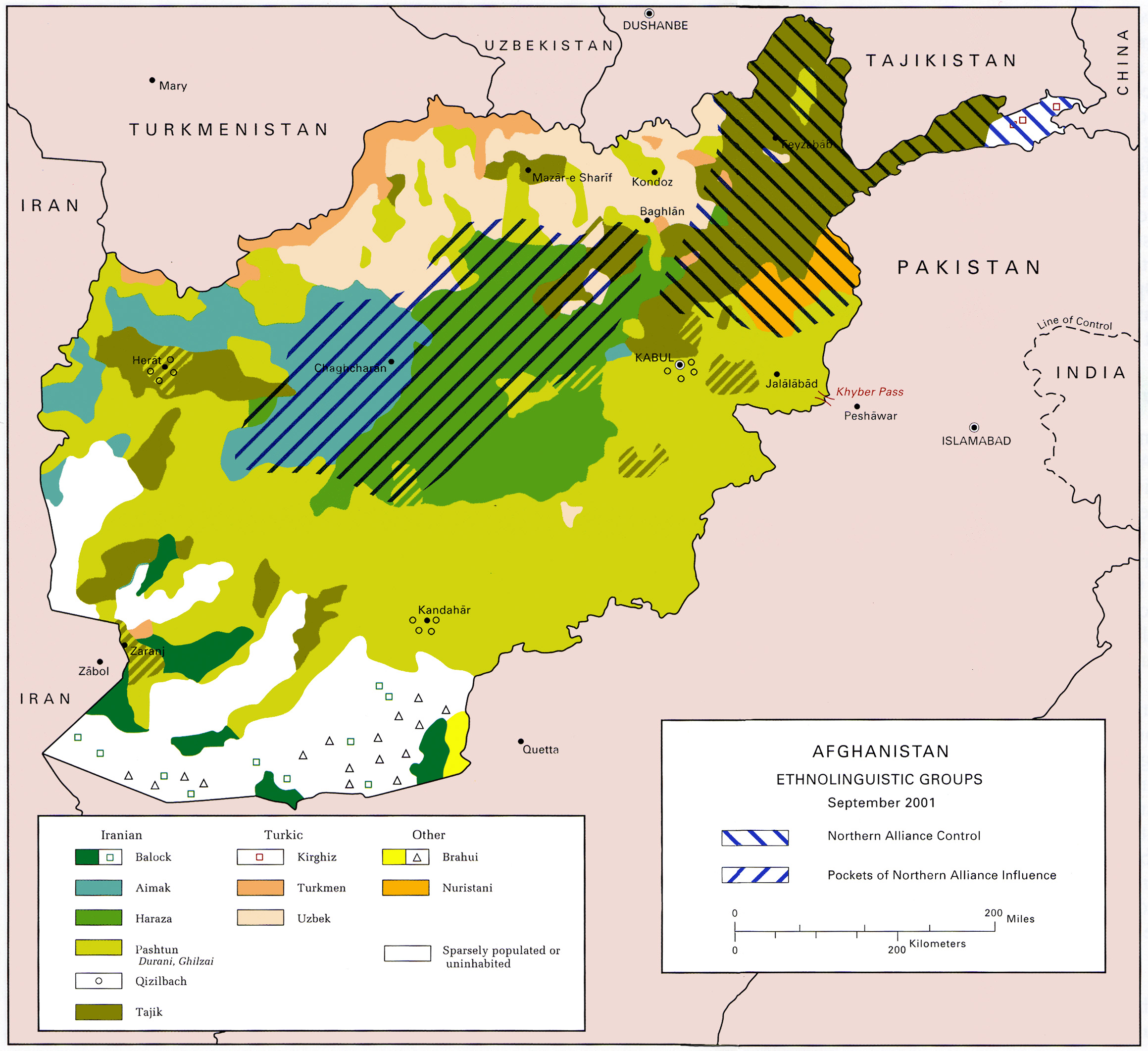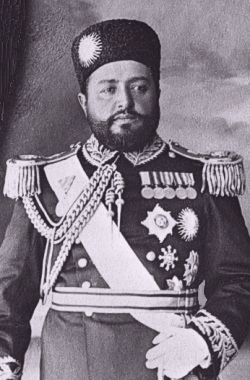|
Takhār Province
Takhar (Dari/Pashto: ) is one of the thirty-four provinces of Afghanistan, located in the northeast of the country next to Tajikistan. It is surrounded by Badakhshan in the east, Panjshir in the south, and Baghlan and Kunduz in the west. The city of Taloqan serves as its capital. The province contains 17 districts, over 1,000 villages, and approximately 1,113,173 people, which is multi-ethnic and mostly a rural society. History Early history 7th to 16th centuries 16th to 20th centuries Between the early 16th century and the mid-18th century, the territory was ruled by the Khanate of Bukhara. It was given to Ahmad Shah Durrani by Murad Beg of Bukhara after a treaty of friendship was reached in or about 1750, and became part of the Durrani Empire. It was ruled by the Durranis followed by the Barakzai dynasty and was untouched by the British during the three Anglo-Afghan wars that were fought in the 19th and early 20th centuries. 1964–2001 It ... [...More Info...] [...Related Items...] OR: [Wikipedia] [Google] [Baidu] |
Provinces Of Afghanistan
The provinces of Afghanistan ( ''Wilayah, wilāyat'') are the primary administrative divisions. Afghanistan is divided into 34 provinces. Each province encompasses a number of Districts of Afghanistan, districts or usually over 1,000 villages. Provincial governors played a critical role in the reconstruction of the Afghan state following the creation of the new government under Hamid Karzai. According to international security scholar Dipali Mukhopadhyay, many of the provincial governors of the western-backed government were former warlords who were incorporated into the political system. Provinces of Afghanistan Administrative The following table lists the province, capital, number of districts, UN region, region, ISO 3166-2:AF code and license plate code. Demographic The following table lists the province, population in 2024, area in square kilometers and population density. Regions of Afghanistan The following tables summarize data from the demographic ... [...More Info...] [...Related Items...] OR: [Wikipedia] [Google] [Baidu] |
Multiethnic Society
A multinational state or a multinational political union, union is a sovereignty, sovereign entity that comprises two or more nations or state (polity), states. This contrasts with a nation state, where a single nation accounts for the bulk of the population. Depending on the definition of "nation" (which touches on ethnicity, language, and political identity), a multinational state is usually multiculturalism, multicultural or multilingualism, multilingual, and is geographically composed of more than one country, such as the countries of the United Kingdom. Historical multinational states that have since split into multiple states include the Ottoman Empire, British Raj, British India, Qing dynasty, Qing Empire, Czechoslovakia, the Soviet Union, Yugoslavia, the United Arab Republic and Austria-Hungary (a dual monarchy of two multinational states). Some analysts have described the European Union as a multinational state or a potential one.Kelemen, R. Daniel. (2007). In ''Making His ... [...More Info...] [...Related Items...] OR: [Wikipedia] [Google] [Baidu] |
Ahmad Shah Massoud
Ahmad Shāh Massoud (2 September 19539 September 2001) was an Afghan militant leader and politician. He was a guerrilla commander during the resistance against the Soviet occupation during the Soviet–Afghan War from 1979 to 1989. In the 1990s, he led the government's military wing against rival militia, and actively fought against the Taliban, from the time the regime rose to power in 1996, and until his assassination in 2001. Massoud came from an ethnic Tajik people, Tajik of Sunni Islam, Sunni Muslims, Muslim background in the Panjshir Valley in Northern Afghanistan. He began studying engineering at Polytechnical University of Kabul in the 1970s, where he became involved with religious anti-communist movements around Burhanuddin Rabbani, a leading Islamism, Islamist. He participated in a failed uprising against Mohammed Daoud Khan's government. He later joined Rabbani's Jamiat-e Islami party. During the Soviet–Afghan War, his role as an insurgent leader of the Afghan mu ... [...More Info...] [...Related Items...] OR: [Wikipedia] [Google] [Baidu] |
Burhanuddin Rabbani
Burhānuddīn Rabbānī (; 20 September 1940 – 20 September 2011) was an Afghanistan, Afghan politician and teacher who served as the sixth president of Afghanistan from 1992 to 1996, and again from November to December 2001 (in exile from 1996 to 2001). Born in the Badakhshan Province, Rabbani studied at Kabul University and worked there as a professor of Islamic theology. He formed the Jamiat-e Islami (''Islamic Society'') at the university which attracted then-students Gulbuddin Hekmatyar and Ahmad Shah Massoud, both would eventually become the two leading commanders of the Afghan mujahideen in the Soviet–Afghan War from 1979. Rabbani was chosen to be the President of Afghanistan after the end of the former Democratic Republic of Afghanistan, communist regime in 1992. Rabbani and his Islamic State of Afghanistan government was later forced into exile by the Taliban, and he then served as the political head of the Northern Alliance, an alliance of various political groups w ... [...More Info...] [...Related Items...] OR: [Wikipedia] [Google] [Baidu] |
Soviet–Afghan War
The Soviet–Afghan War took place in the Democratic Republic of Afghanistan from December 1979 to February 1989. Marking the beginning of the 46-year-long Afghan conflict, it saw the Soviet Union and the Armed Forces of the Democratic Republic of Afghanistan, Afghan military fight against the rebelling Afghan mujahideen, aided by Pakistan. While they were backed by various countries and organizations, the majority of the mujahideen's support came from Pakistan, the United States (as part of Operation Cyclone), the United Kingdom, China, Iran, and the Arab states of the Persian Gulf, in addition to a large influx of foreign fighters known as the Afghan Arabs. American and British involvement on the side of the mujahideen escalated the Cold War, ending a short period of relaxed Soviet Union–United States relations. Combat took place throughout the 1980s, mostly in the Afghan countryside, as most of the country's cities remained under Soviet control. The conflict resulted in the de ... [...More Info...] [...Related Items...] OR: [Wikipedia] [Google] [Baidu] |
Qataghan Province
Qataghan Province () was a province of Afghanistan which became defunct in 1963, when it was divided into the current Baghlan Province, Kunduz Province, and Takhar Province.Ludwig W. Adamec. Historical and political gazetteer of Afghanistan Vol. 1. Badakhshan Province and northeastern Afghanistan. Graz : Akad. Druck- und Verl.-Anst., 1972. From the 19th century to 1963 Qataghan and neighboring Badakhshan Province were united into a single province called Qataghan-Badakhshan Province. It was ruled by a single governor and was divided into two separate provinces in 1963. The capital of Qataghan Province was Baghlan, now a city in the north of Baghlan Province. Etymology Historian William Maley stated that the removal of the term "Qataghan" upon the division of the area was part of a deliberate process to remove ethnic identities from administrative names, drawing a comparison with the division and renaming of Hazarajat, homeland of the ethnic Hazaras. Music Qataghani style so ... [...More Info...] [...Related Items...] OR: [Wikipedia] [Google] [Baidu] |
Anglo-Afghan War
Anglo-Afghan Wars may refer to: * Expedition of Shah Shujah Durrani (1833–1834) * First Anglo-Afghan War (1838–1842) * Second Anglo-Afghan War (1878–1880) * Hazara Expedition (1888) * Chitral Expedition (1895) * Tochi Expedition (1897–1898) * Siege of Malakand (1897) * Mohmand campaign (1897–1898) * Tirah Campaign (1897–1898) * Mahsud Waziri blockade (1900–1902) * Operations in the Tochi (1914–1915) * Operations against the Mohmands, Bunerwals and Swatis (1915) * Mohmand blockade (1916–1917) * Operations against the Mahsuds (1917) * Third Anglo-Afghan War (1919) * Waziristan Campaign (1919–1920) * Waziristan campaign (1921–1924) * Pink's War (1925) * Mohmand Campaign (1935) * Waziristan campaign (1936–1939) * American-Afghan War ** Operation Herrick (War in Afghanistan; November 2001 – December 2014) ** Operation Toral (War in Afghanistan; December 2014 – August 2021) See also * European influence in Afghanistan, where the backdrop ... [...More Info...] [...Related Items...] OR: [Wikipedia] [Google] [Baidu] |
British Raj
The British Raj ( ; from Hindustani language, Hindustani , 'reign', 'rule' or 'government') was the colonial rule of the British The Crown, Crown on the Indian subcontinent, * * lasting from 1858 to 1947. * * It is also called Crown rule in India, * * * * or direct rule in India. * Quote: "Mill, who was himself employed by the British East India company from the age of seventeen until the British government assumed direct rule over India in 1858." * * The region under British control was commonly called India in contemporaneous usage and included areas directly administered by the United Kingdom of Great Britain and Ireland, United Kingdom, which were collectively called ''Presidencies and provinces of British India, British India'', and areas ruled by indigenous rulers, but under British British paramountcy, paramountcy, called the princely states. The region was sometimes called the Indian Empire, though not officially. As ''India'', it was a founding member of th ... [...More Info...] [...Related Items...] OR: [Wikipedia] [Google] [Baidu] |
Barakzai Dynasty
The Barakzai dynasty (, "Sons of Barak"), also known as the Muhammadzai dynasty ("the ruling sub-clan of the Barakzai"), ruled what is now Afghanistan from 1823 to 1978, when the monarchy ended de jure under Musahiban Mohammad Zahir Shah and de facto under his cousin Mohammad Daoud Khan. The Barakzai dynasty was established by Dost Mohammad Khan after the Durrani Empire of Ahmad Shah Durrani was removed from power. As the Pahlavi era in Iran, the Muhammadzai era was known for its progressivist modernity, practice of Sufism, peaceful security and neutrality, in which Afghanistan was referred to as the "Switzerland of Asia". History and background Ancestral background The Barakzai claim descent from the children of Israel in a direct line through the first Israeli King Saul, whose family intermarried with the family of his successor King David. King Saul's grandson the Prince (Malak) Afghana was grown up by King Solomon, acting as his commander in chief and Manager ... [...More Info...] [...Related Items...] OR: [Wikipedia] [Google] [Baidu] |




